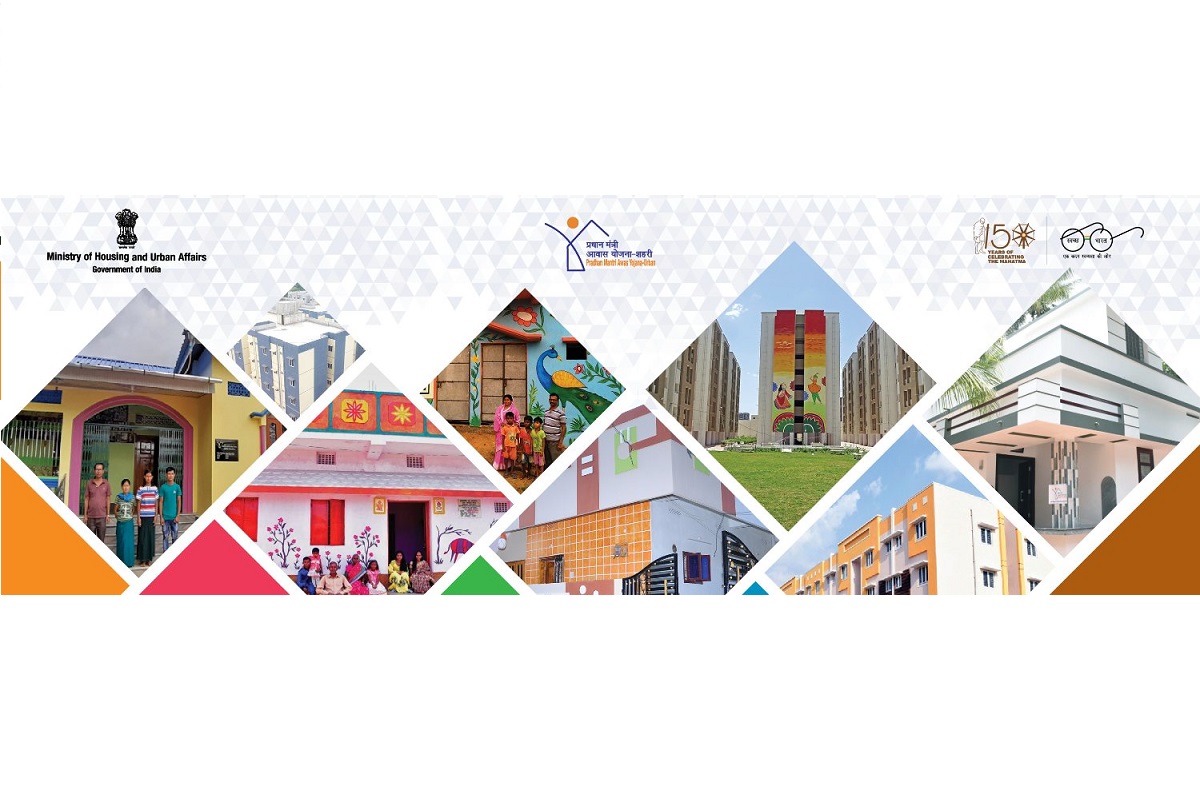PM to do ‘bhoomi pujan’ of cancer hospital in Madhya Pradesh
Officials said the initiative at Bageshwar Dham is a significant step in the field of cancer treatment, ensuring better healthcare services for people from all walks of life.
The revamped rural housing scheme came into effect on 1 April 2016. The program envisages the completion of 2.95 crore PMAY-G houses with all basic amenities by the year 2022.
SNS | New Delhi | November 20, 2021 7:10 pm

(Image Source: Twitter/@PMAYUrban)
State governments and Union Territories on Saturday organised various events including Bhoomi Pujan, Gruh Pravesh, visit of beneficiaries to demonstration houses, sensitization of beneficiaries about PMAY-G on the eve the completion of five years of Pradhanmantri Awas Yojna- Gramin.
“Ensuring the fulfilment of the noble objective of housing for all, the Ministry in partnership with the State government endeavours to complete the target within the time frame,” a Rural Development Ministry note here said.
Advertisement
Pradhan Mantri Awaas Yojana-Gramin (PMAY-G) was launched on 20 November 2016 to achieve the objective of providing “Housing to All” by the year 2022. The revamped rural housing scheme came into effect on 1 April 2016. The program envisages the completion of 2.95 crore PMAY-G houses with all basic amenities by the year 2022.
Advertisement
Apart from focusing on providing houses to the eligible beneficiaries, PMAY-G also addresses the basic needs of households through convergence with other Government Schemes. The beneficiary is entitled to 90 to 95 person-days of unskilled labour from MGNREGS. The assistance for the construction of the toilet shall be leveraged through convergence with SBM-G. Convergence for piped drinking water, electricity connection, LPG gas connection, etc. under different government programmes is also an inherent thematic component, according to the ministry.
An exercise for identification of households, who though eligible for assistance under PMAY-G as per the parameters specified under SECC-2011 but have not been included in the list of eligible beneficiaries and creating an additional list of eligible households was carried out by the Ministry of Rural Development through the States / UTs using Mobile Application “Awaas+”. The survey was started in January 2018 and completed on 7 March 2019. All 3.57 crore households were captured in the Awaas+ survey. Out of which, 2.76 crores household were found eligible and 51.07 lakh has been allocated to States/UTs so far, the government note further added.
The program is being implemented and monitored through end-to-end e-governance solutions, AwaasSoft, and AwaasApp. AwaasSoft provides functionalities for data entry and monitoring of multiple statistics related to implementation aspects of the scheme. These statistics include physical progress (registrations, sanctions, house completion and release of instalments, etc.), financial progress, the status of convergence, etc.
Since the launch of the scheme in 2016, efforts are being taken to make the software more user-friendly. New modules have been added to the software for making it more accessible and maintain transparency in the implementation of the program.
Some of the modules added recently in the software include Landless Module. The scheme has also taken care of landless households in the permanent waitlist (PWL). The State government must ensure the provision of land to landless households on priority as they are the neediest ones.
Further, to map landless beneficiaries in the PWL of PMAY-G and to capture the status of availing land or financial assistance for land purchase to the landless beneficiaries, a module on landless has been developed. The module captures the status of land provided to landless beneficiaries either financially assisted or provided land physically, the Ministry note further pointed out.
Advertisement
Officials said the initiative at Bageshwar Dham is a significant step in the field of cancer treatment, ensuring better healthcare services for people from all walks of life.
He said that the project would realize the vision of Bharat Ratna and former Prime Minister Late Atal Bihari Vajpayee, as the bhoomi pujan would be carried out on his 100th birth anniversary.
Chairman-CEC, Ladakh Autonomous Hill Development Council (LAHDC), Leh, Tashi Gyalson, Advisor to Lt Governor, UT Ladakh, Dr Pawan Kotwal and Vice Chancellor Prof Rajesh Ranjan were among those present on the occasion.
Advertisement
